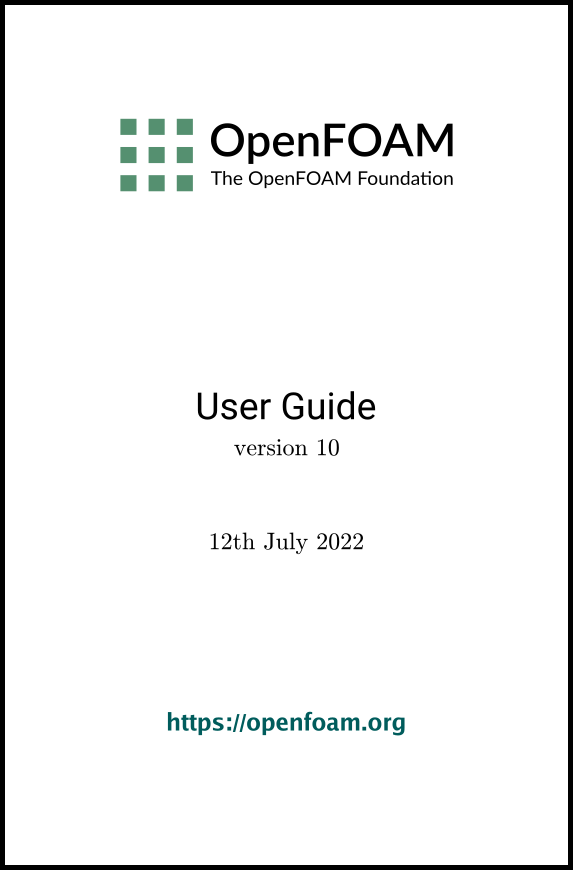[version 13][version 12][version 11][version 10][version 9][version 8][version 7][version 6]
Chapter 5 Mesh generation and conversion
This chapter describes all topics relating to the creation of meshes in OpenFOAM: section 5.1 gives an overview of the ways a mesh may be described in OpenFOAM; section 5.3 covers the blockMesh utility for generating simple meshes of blocks of hexahedral cells; section 5.4 covers the snappyHexMesh utility for generating complex meshes of hexahedral and split-hexahedral cells automatically from triangulated surface geometries; section 5.5 describes the options available for conversion of a mesh that has been generated by a third-party product into a format that OpenFOAM can read.
5.1
Mesh
description
5.1.1 Mesh specification and validity constraints
5.1.2 The polyMesh description
5.1.3 Cell shapes
5.1.4 1- and 2-dimensional and axi-symmetric problems
5.2 Boundaries
5.2.1 Geometric (constraint) patch types
5.2.2 Basic boundary conditions
5.2.3 Derived types
5.3 Mesh generation with the blockMesh utility
5.3.1 Writing a blockMeshDict file
5.3.2 Multiple blocks
5.3.3 Projection of vertices, edges and faces
5.3.4 Naming vertices, edges, faces and blocks
5.3.5 Creating blocks with fewer than 8 vertices
5.3.6 Running blockMesh
5.4 Mesh generation with the snappyHexMesh utility
5.4.1 The mesh generation process of snappyHexMesh
5.4.2 Creating the background hex mesh
5.4.3 Cell splitting at feature edges and surfaces
5.4.4 Cell removal
5.4.5 Cell splitting in specified regions
5.4.6 Cell splitting based on local span
5.4.7 Snapping to surfaces
5.4.8 Mesh layers
5.4.9 Mesh quality controls
5.5 Mesh conversion
5.5.1 fluentMeshToFoam
5.5.2 starToFoam
5.5.3 gambitToFoam
5.5.4 ideasToFoam
5.5.5 cfx4ToFoam
5.6 Mapping fields between different geometries
5.6.1 Mapping consistent fields
5.6.2 Mapping inconsistent fields
5.6.3 Mapping parallel cases
5.1.1 Mesh specification and validity constraints
5.1.2 The polyMesh description
5.1.3 Cell shapes
5.1.4 1- and 2-dimensional and axi-symmetric problems
5.2 Boundaries
5.2.1 Geometric (constraint) patch types
5.2.2 Basic boundary conditions
5.2.3 Derived types
5.3 Mesh generation with the blockMesh utility
5.3.1 Writing a blockMeshDict file
5.3.2 Multiple blocks
5.3.3 Projection of vertices, edges and faces
5.3.4 Naming vertices, edges, faces and blocks
5.3.5 Creating blocks with fewer than 8 vertices
5.3.6 Running blockMesh
5.4 Mesh generation with the snappyHexMesh utility
5.4.1 The mesh generation process of snappyHexMesh
5.4.2 Creating the background hex mesh
5.4.3 Cell splitting at feature edges and surfaces
5.4.4 Cell removal
5.4.5 Cell splitting in specified regions
5.4.6 Cell splitting based on local span
5.4.7 Snapping to surfaces
5.4.8 Mesh layers
5.4.9 Mesh quality controls
5.5 Mesh conversion
5.5.1 fluentMeshToFoam
5.5.2 starToFoam
5.5.3 gambitToFoam
5.5.4 ideasToFoam
5.5.5 cfx4ToFoam
5.6 Mapping fields between different geometries
5.6.1 Mapping consistent fields
5.6.2 Mapping inconsistent fields
5.6.3 Mapping parallel cases
OpenFOAM v10 User Guide - Chapter 5 Mesh generation and conversion

